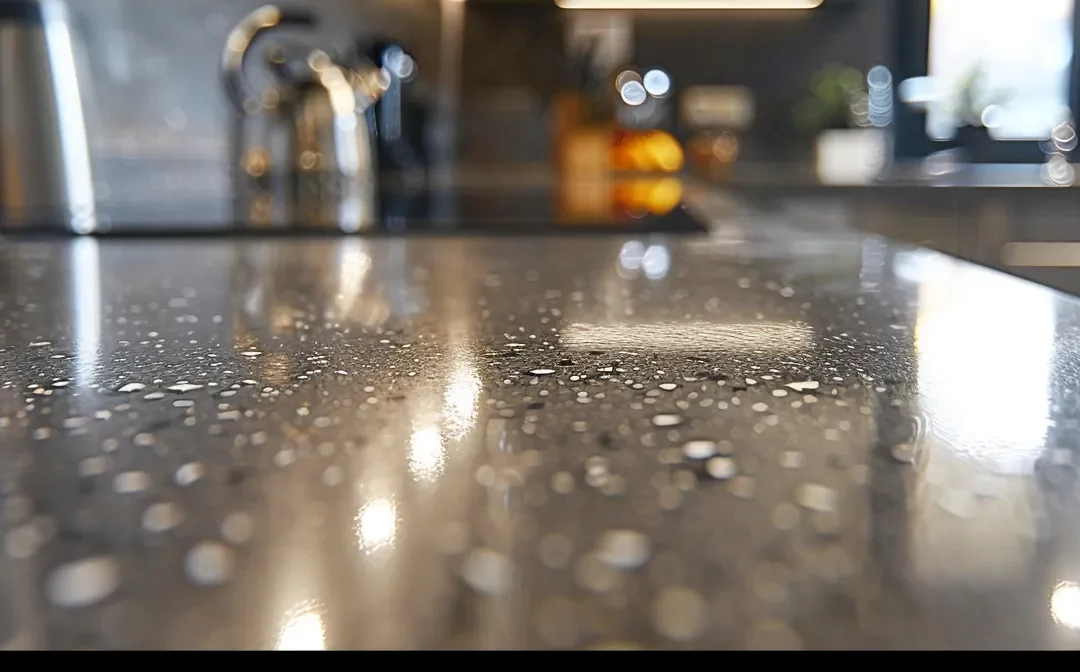Melbourne Bench Top Resurfacing Services
Table Of Contents:
- Key Takeaways
- Identifying When Your Countertops Need Resurfacing
- Benefits of Expert Countertop Resurfacing Techniques
- Top Resurfacing Techniques to Extend Countertop Lifespan
- Selecting the Right Professional for Your Resurfacing Needs
- Maintenance Practices After Resurfacing
- Maximizing the Longevity of Resurfaced Countertops
Are your countertops showing signs of wear and tear? Many homeowners overlook the need for resurfacing, which can significantly extend the life of surfaces made from materials like concrete or stone. In this article, you will learn how to identify when your countertops need resurfacing, explore the benefits of expert techniques, and discover maintenance practices that keep them looking new. By addressing common issues such as scratches and stains, you can enhance the longevity of your countertops and maintain their appeal with the right adhesive and cleaning methods, including the use of detergent and grout.
Key Takeaways
- Regularly assess countertops for signs of wear to maintain their longevity
- Resurfacing can restore beauty and functionality to damaged surfaces
- Professional resurfacing techniques enhance durability and protect against future wear
- Establish a cleaning routine to preserve the finish of your countertops
- Schedule follow-up services to address any signs of damage promptly
Identifying When Your Countertops Need Resurfacing
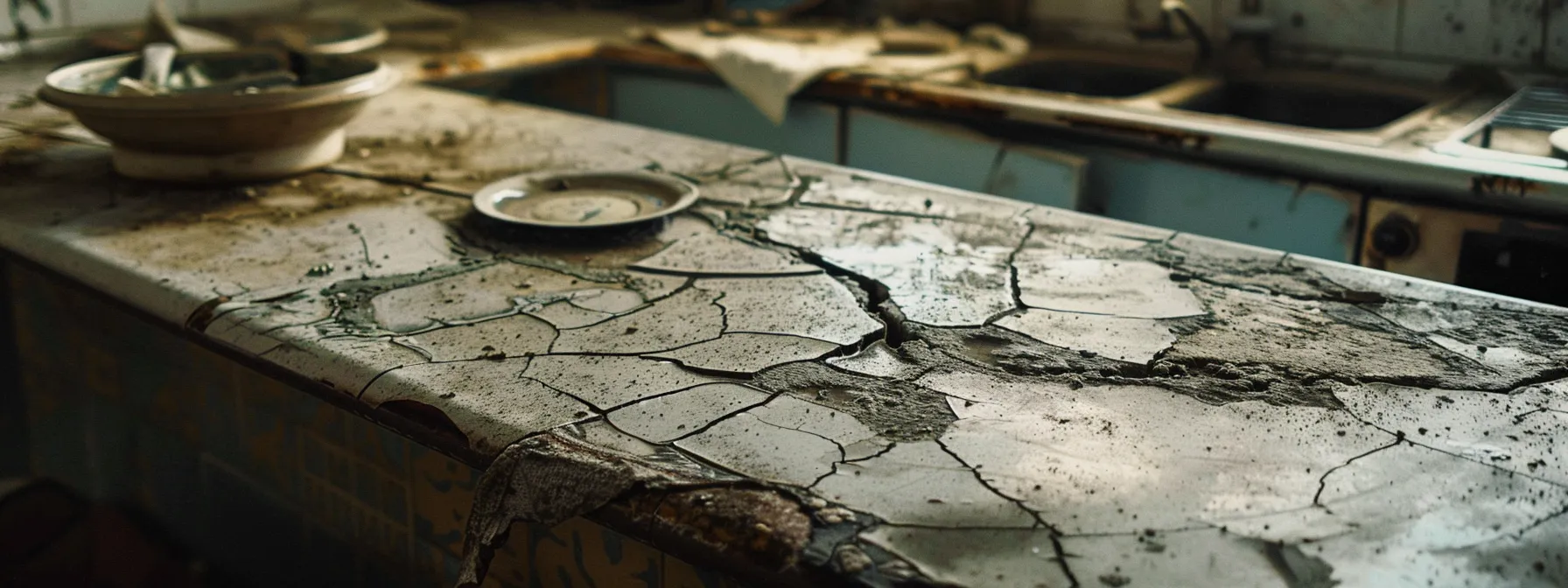
Recognizing signs of wear and damage on your countertops is essential for maintaining their longevity. You will learn how to assess the impact of these issues on durability, especially during a kitchen remodel. Understanding the risks associated with debris and wear on solid surface materials will help you make informed decisions about resurfacing and prolonging the life of your countertops.
Recognizing Signs of Wear and Damage
When assessing your countertops, look for visible signs of wear and damage. Scratches, stains, and dullness can indicate that your surfaces are losing their protective finish. If you notice dirt and dust accumulating in these areas, it may be time to consider resurfacing to restore their original beauty and functionality.
Particularly with materials like butcher block and Formica, regular maintenance is crucial. If you see deep scratches or water damage, these issues can compromise the integrity of the material. Addressing these problems early through resurfacing can prevent further deterioration and extend the life of your countertops.
During a renovation, it’s essential to evaluate the condition of your countertops. If they show signs of significant wear, such as discoloration or uneven surfaces, resurfacing can provide a fresh start. This process not only enhances the appearance but also protects against future damage, ensuring your countertops remain a focal point in your kitchen for years to come.
Assessing the Impact on Longevity and Durability
When you assess the condition of your countertops, consider how wear and damage can affect their longevity and durability. For instance, if you notice scratches or dull spots, these imperfections can lead to further deterioration if not addressed promptly. Resurfacing your countertops with a fresh coat can restore their protective finish, ensuring they withstand daily use in your kitchen.
Using sandpaper during the resurfacing process can help smooth out rough areas and prepare the surface for a new finish. This technique not only enhances the appearance of your countertops but also reinforces their durability against future wear. By investing in proper resurfacing techniques, you can significantly extend the life of your kitchen cabinets and countertops, making them more resilient to everyday challenges.
Additionally, if you have a bathtub that shows signs of wear, similar resurfacing techniques can be applied through bathtub refinishing. This process involves carefully preparing the surface and applying a durable coat that protects against scratches and stains. By understanding the impact of resurfacing on both countertops and bathtubs, you can make informed decisions that enhance the longevity of your home’s surfaces.
Once you recognize the signs that your countertops need resurfacing, it’s time to consider the next steps. Expert techniques can breathe new life into your surfaces, offering both beauty and durability.
Benefits of Expert Countertop Resurfacing Techniques
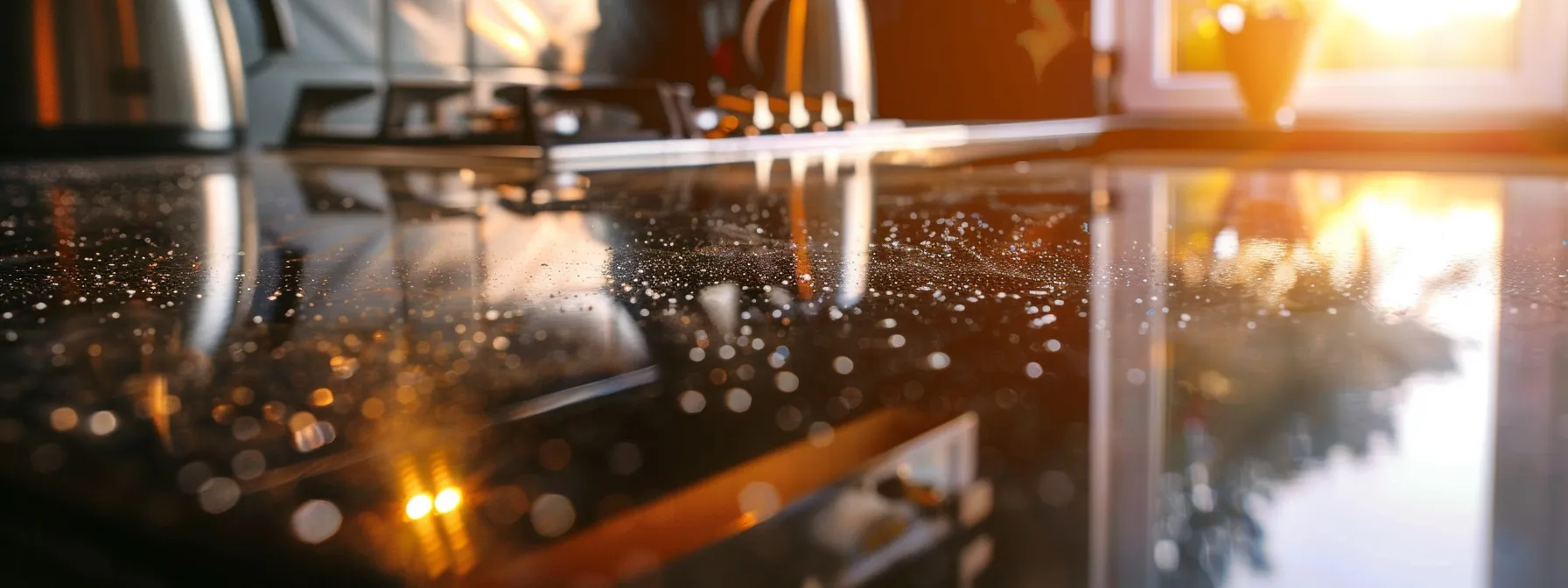
Expert countertop resurfacing techniques significantly enhance durability, addressing wear and tear effectively. By opting for professional methods, you can avoid the high costs associated with replacement, ensuring your surfaces remain functional and visually appealing. This section will explore how these techniques provide a warranty for your investment, as well as their application in various areas, including showers and floors, even for plastic surfaces.
Enhancing Durability With Professional Methods
Utilizing professional resurfacing methods can significantly enhance the durability of your countertops, whether they are made of quartz, porcelain, or other materials. These techniques involve applying high-quality finishes that resist wear and tear, ensuring your surfaces remain functional and visually appealing for years. By investing in expert resurfacing, you protect your countertops from daily challenges, such as scratches and stains, which can compromise their integrity.
In a bathroom setting, where moisture and heavy use are common, professional resurfacing can be particularly beneficial. For instance, resurfacing porcelain countertops can create a water-resistant barrier that prevents damage from humidity and spills. This not only maintains the aesthetic appeal of your bathroom but also extends the life of your surfaces, making them more resilient against wear.
Moreover, expert resurfacing techniques can be applied to various surfaces, including kitchen countertops and bathroom vanities. By choosing professional services, you ensure that the right materials and methods are used for your specific needs. This tailored approach not only enhances durability but also provides peace of mind, knowing that your investment is protected against future wear and damage:
- Improved resistance to scratches and stains.
- Water-resistant barriers for bathroom surfaces.
- Tailored methods for different materials like quartz and porcelain.
Cost-Effectiveness Compared to Replacement
Choosing to resurface your countertops instead of replacing them can lead to significant cost savings. For instance, resurfacing a marble or stainless steel countertop is often much less expensive than a full replacement. This approach allows you to maintain the aesthetic appeal of your kitchen or bathroom without the financial burden of new materials and installation.
Additionally, resurfacing can extend the life of your existing cabinetry and surfaces, making it a smart investment. By applying a durable liquid finish, you can protect your countertops from scratches and stains, which are common issues with materials like ceramic and laminate. This proactive measure not only enhances the appearance of your surfaces but also reduces the need for frequent repairs or replacements.
Ultimately, expert resurfacing techniques provide a practical solution for homeowners looking to refresh their spaces. Instead of opting for costly replacements, you can achieve a like-new look for your countertops while preserving your budget. This strategy ensures that your kitchen or bathroom remains functional and visually appealing for years to come, making it a wise choice for any renovation project.
Expert techniques can breathe new life into your countertops. Now, let’s explore the top resurfacing methods that will help your surfaces last longer.
Top Resurfacing Techniques to Extend Countertop Lifespan
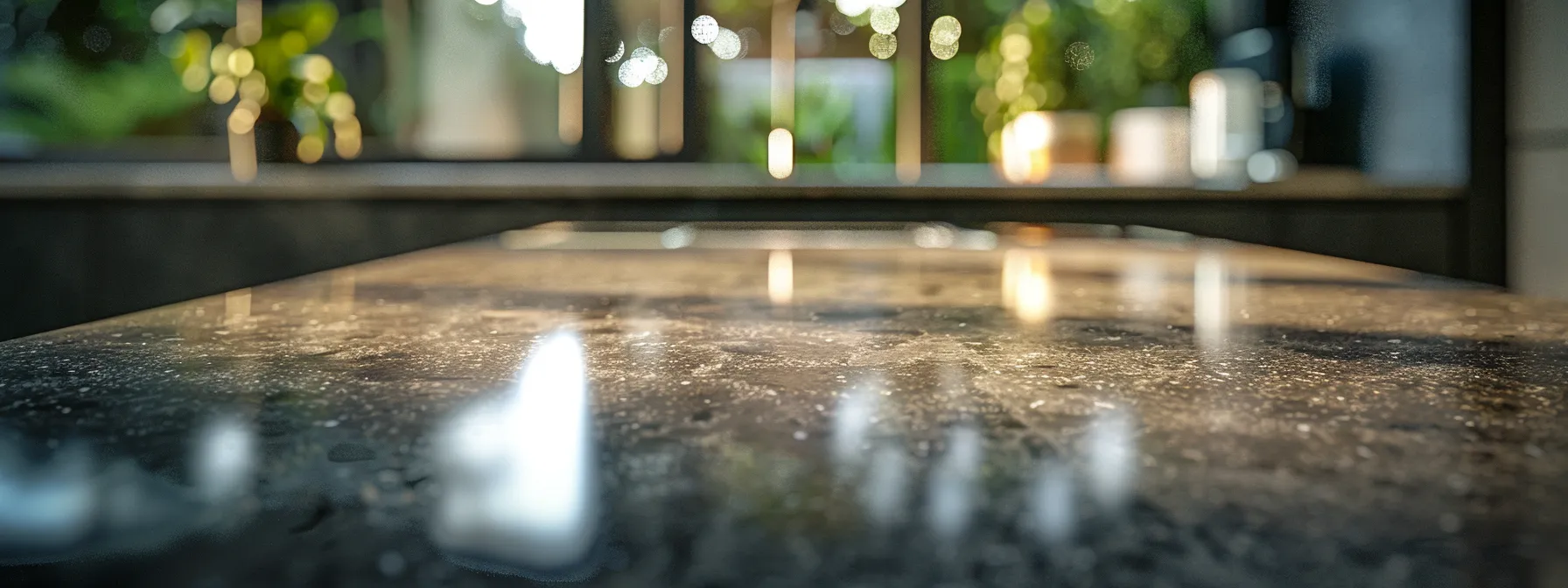
To extend the lifespan of your countertops, focus on three key resurfacing techniques. First, surface preparation is crucial for optimal results, ensuring a clean and smooth base. Next, the application of high-quality resurfacing materials, whether for wood, plywood, or granite, enhances durability. Finally, finishing processes add an extra layer of protection, making your surfaces more resilient to wear and tear.
Surface Preparation for Optimal Results
Surface preparation is a critical step in achieving optimal results when resurfacing your countertops. Start by thoroughly cleaning the surface to remove any dirt, grease, or stains that may interfere with the adhesion of the new finish. For materials like soapstone, using a mild abrasive cleaner can help eliminate stubborn marks while ensuring the surface is ready for the next steps.
Once the surface is clean, inspect it for any deep scratches or imperfections. If you find areas that resemble damage from a cutting board or other kitchen tools, consider sanding them down to create a smooth base. This process not only enhances the appearance but also allows the sealant to adhere better, providing a more durable finish that can withstand daily use.
After preparing the surface, applying a high-quality sealant is essential for protecting your countertops from future wear and tear. This sealant acts as a barrier against stains and moisture, ensuring that your countertops remain functional and visually appealing. By investing time in proper surface preparation, you can significantly extend the lifespan of your countertops and maintain their beauty for years to come.
Application of High-Quality Resurfacing Materials
When applying high-quality resurfacing materials, using a primer is essential for ensuring proper adhesion to your countertop. A good primer creates a strong bond between the existing surface and the new layer, which is crucial for durability. This step is particularly important if your countertop has been previously treated or if it is made from materials like laminate or wood.
Next, consider using epoxy or resin as your resurfacing material. These substances are known for their strength and resistance to wear, making them ideal for high-traffic areas like kitchens. When applied correctly, epoxy can create a seamless finish that not only enhances the appearance of your countertop but also protects it from moisture and stains, especially around the sink area.
Finally, ensure that you follow the manufacturer’s instructions for mixing and applying these materials. Proper application techniques will help you achieve a smooth, even surface that looks professional. By investing in high-quality resurfacing materials and taking the time to apply them correctly, you can significantly extend the lifespan of your countertops and maintain their beauty for years to come.
Finishing Processes for Increased Durability
Finishing processes play a crucial role in benchtop resurfacing, as they provide an additional layer of protection against daily wear and tear. Applying a high-quality finish not only enhances the appearance of your countertops but also creates a barrier that resists stains and scratches. This step is essential for maintaining the beauty and functionality of your surfaces over time.
When selecting a finish for your resurfaced countertops, consider options like polyurethane or epoxy. These materials are known for their durability and resistance to moisture, making them ideal for high-traffic areas such as kitchens and bathrooms. By choosing the right finish, you can ensure that your countertops withstand the rigors of daily use while maintaining their aesthetic appeal.
Proper application of the finishing product is vital for achieving optimal results. Ensure that you follow the manufacturer’s instructions for mixing and applying the finish to avoid issues like bubbling or uneven surfaces. Taking the time to apply the finish correctly will significantly enhance the longevity of your countertops, allowing you to enjoy their beauty and functionality for years to come:
You’ve learned how to care for your countertops. Now, it’s time to find the right expert to help you bring your vision to life.
Selecting the Right Professional for Your Resurfacing Needs
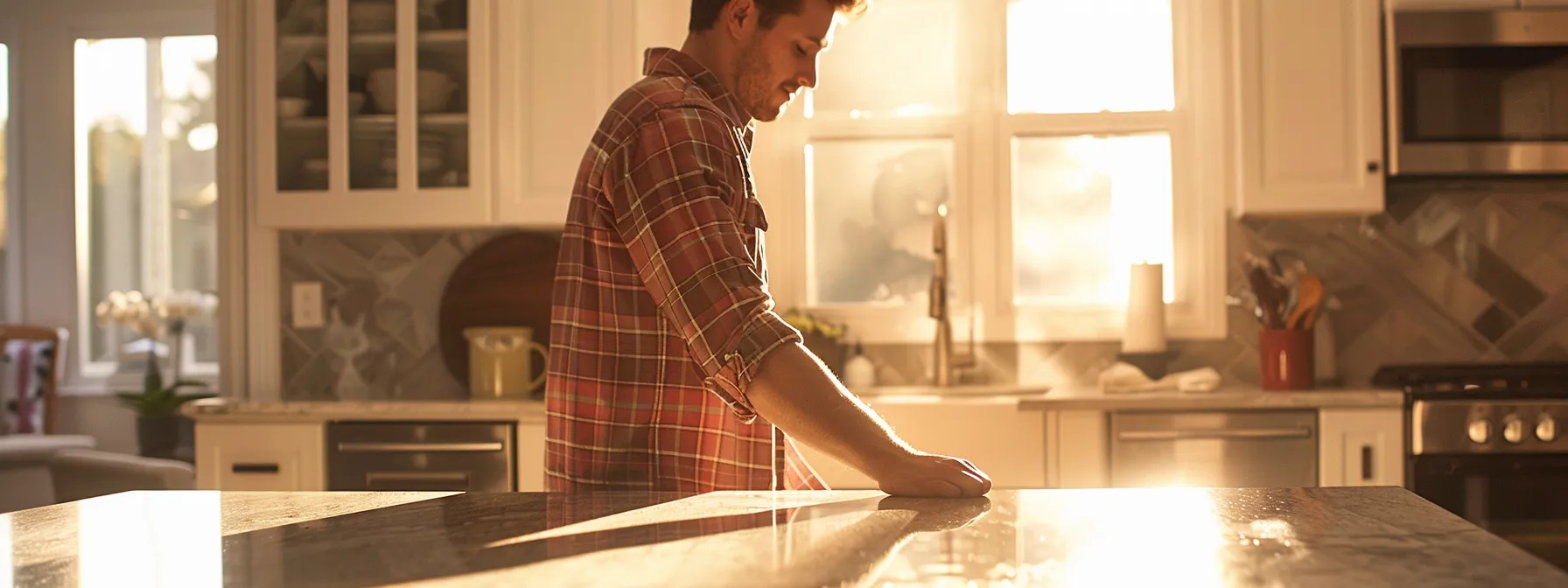
Selecting the right professional for your countertop resurfacing needs is crucial for achieving lasting results. Start by evaluating the experience and expertise of potential specialists to ensure they have the skills necessary for your project. Additionally, asking the right questions can help you gauge their knowledge and approach, ensuring you make an informed decision for your home.
Evaluating Experience and Expertise
When selecting a professional for your countertop resurfacing needs, it’s essential to evaluate their experience in the field. Look for specialists who have a proven track record of successful projects, particularly those that align with the specific materials you have, such as quartz or laminate. Experienced professionals will not only understand the nuances of different surfaces but also be familiar with the best practices for achieving durable and aesthetically pleasing results.
In addition to experience, consider the expertise of the resurfacing professional. Ask about their training and certifications, as these can indicate a commitment to quality and industry standards. A knowledgeable expert will be able to provide insights into the latest resurfacing techniques and materials, ensuring that your countertops receive the best possible care and protection against wear and tear.
Finally, don’t hesitate to request references or examples of previous work. This will give you a clearer picture of the professional’s capabilities and the quality of their craftsmanship. By taking the time to evaluate experience and expertise, you can make an informed decision that enhances the longevity of your countertops and ensures a successful resurfacing project.
Questions to Ask Potential Specialists
When speaking with potential specialists for your countertop resurfacing, start by asking about their experience with the specific materials you have. For instance, if your countertops are made of quartz or laminate, inquire about their familiarity with these surfaces. This will help you gauge whether they possess the necessary skills to handle your project effectively.
Next, discuss the techniques they plan to use during the resurfacing process. Understanding their approach will give you insight into the quality of work you can expect. Ask about the types of materials they recommend and how these choices will enhance the durability and longevity of your countertops.
Finally, request references or examples of previous projects they have completed. This will allow you to see their craftsmanship firsthand and assess whether their work aligns with your expectations. By asking these questions, you can ensure that you select a professional who will meet your resurfacing needs and help maintain the beauty and functionality of your countertops.
Choosing the right professional is just the beginning. Now, let’s explore how to keep your surfaces looking fresh and new for years to come.
Maintenance Practices After Resurfacing
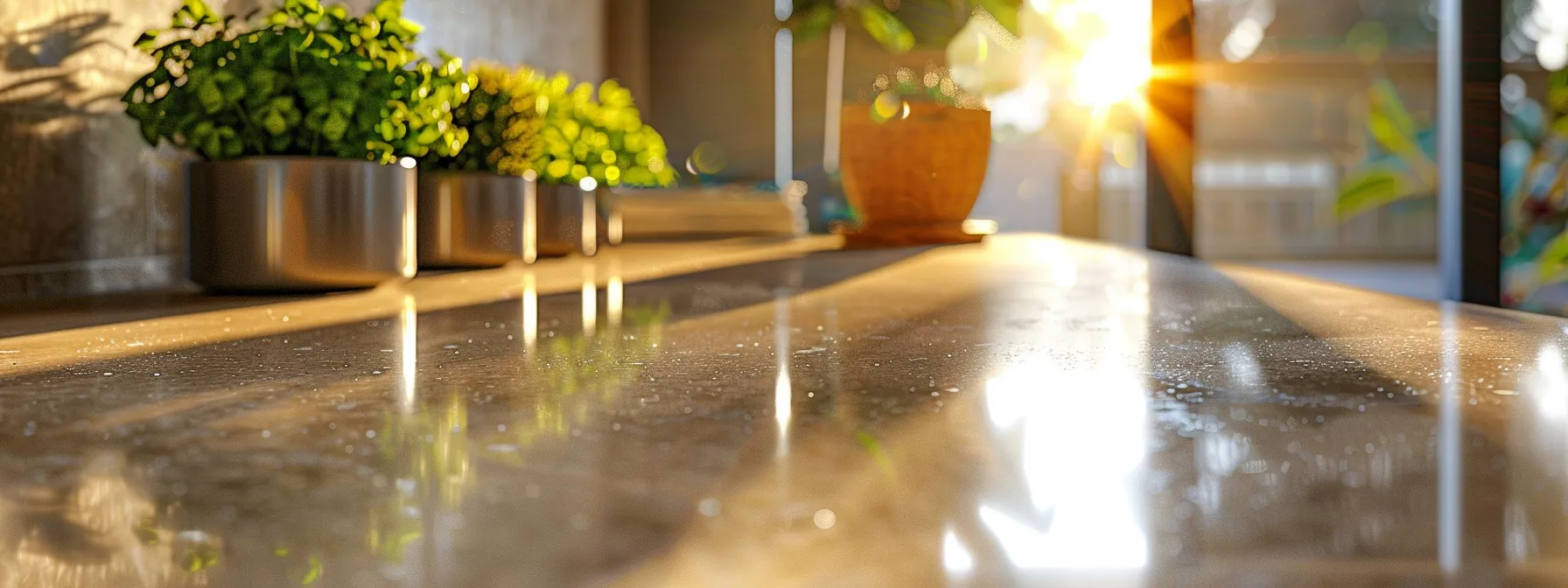
To maintain the beauty and functionality of your resurfaced countertops, it’s essential to adopt effective cleaning methods that preserve the finish. You will also learn how to prevent common types of damage, ensuring your surfaces remain in top condition. These practices will help you protect your investment and extend the lifespan of your countertops.
Cleaning Methods to Preserve the Finish
To preserve the finish of your resurfaced countertops, it’s important to use gentle cleaning methods. Opt for a mild dish soap mixed with warm water to clean the surface regularly. Avoid harsh chemicals or abrasive cleaners, as these can damage the protective layer and diminish the beauty of your countertops.
When cleaning, use a soft cloth or sponge to wipe down the surfaces. This will help prevent scratches and maintain the smooth finish. For tougher stains, consider using a non-abrasive cleaner specifically designed for your countertop material, ensuring that it is safe for use on surfaces like quartz or laminate.
Establishing a regular cleaning routine will help you maintain the appearance and functionality of your countertops. By promptly addressing spills and avoiding excessive moisture, you can protect your investment and extend the lifespan of your surfaces. Here’s a quick reference table to guide you in maintaining your countertops:
Preventing Common Types of Damage
To prevent common types of damage to your resurfaced countertops, it’s essential to establish a routine that minimizes wear. Always use cutting boards when preparing food to avoid scratches from knives. Additionally, placing coasters under hot pots and pans can prevent heat damage, which is crucial for maintaining the integrity of your countertop surfaces.
Regularly inspect your countertops for any signs of wear, such as small scratches or stains. Addressing these issues promptly can prevent them from becoming larger problems. For instance, using a gentle cleaner specifically designed for your countertop material can help remove stains without damaging the finish, ensuring your surfaces remain in top condition.
Finally, consider applying a protective sealant every few years to enhance the durability of your countertops. This extra layer of protection can guard against moisture and stains, extending the life of your surfaces. By following these preventive measures, you can keep your countertops looking beautiful and functional for years to come:
Caring for your resurfaced countertops is just the beginning. To truly enjoy their beauty and function for years, you must know how to maximize their longevity.
Maximizing the Longevity of Resurfaced Countertops
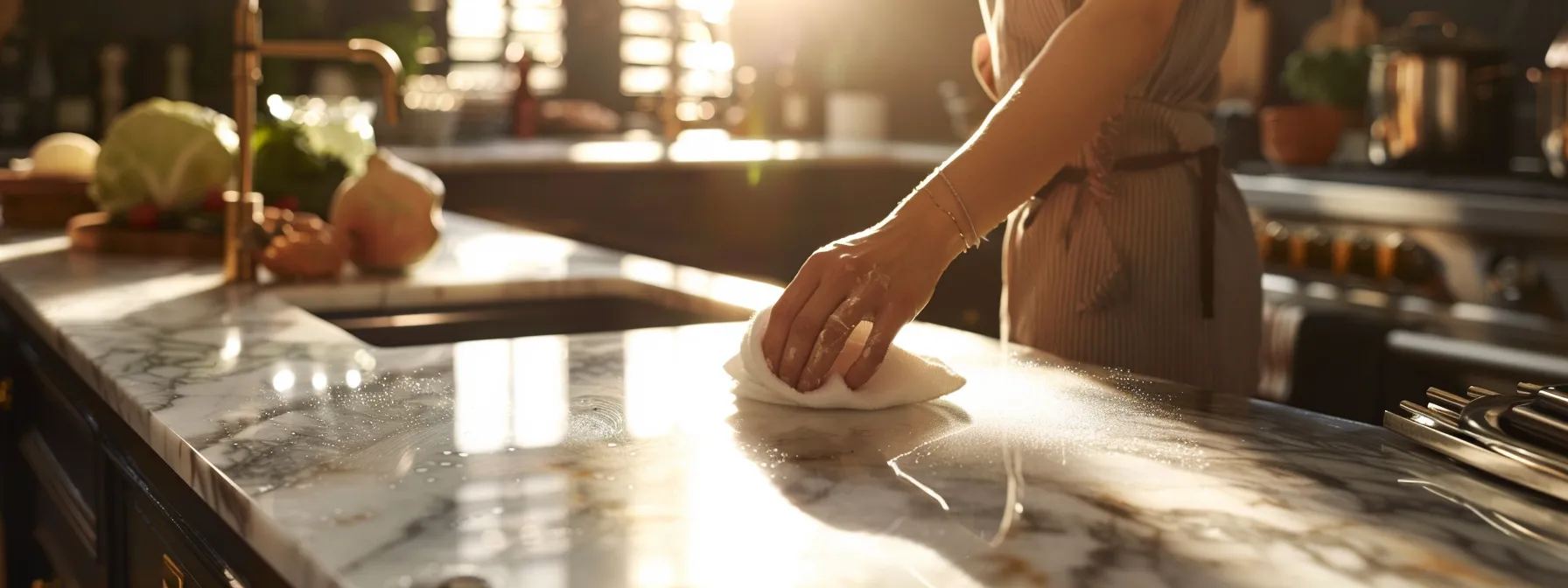
To maximize the longevity of your resurfaced countertops, focus on routine care tips that enhance durability and protect your investment. Regular maintenance will help you identify when to schedule follow-up services, ensuring your surfaces remain in optimal condition. This section will provide practical insights on effective cleaning methods and the importance of timely professional check-ups.
Routine Care Tips for Extended Durability
To extend the durability of your resurfaced countertops, establish a regular cleaning routine that focuses on gentle methods. Use a mixture of mild dish soap and warm water to clean the surfaces, avoiding harsh chemicals that can damage the protective finish. This simple practice helps maintain the beauty of your countertops while preventing wear from abrasive cleaners.
In addition to regular cleaning, be proactive in addressing spills and stains immediately. Promptly wiping up any liquids can prevent moisture from seeping into the surface, which is especially important for materials like laminate and wood. By taking these quick actions, you can significantly reduce the risk of long-term damage and keep your countertops looking their best.
Finally, consider applying a protective sealant every few years to enhance the longevity of your resurfaced countertops. This extra layer acts as a barrier against stains and moisture, providing added protection against everyday wear and tear. By investing in this maintenance step, you ensure that your countertops remain functional and visually appealing for years to come.
When to Schedule Follow-Up Services
Scheduling follow-up services for your resurfaced countertops is essential to maintain their appearance and functionality. You should consider scheduling these services every few years, especially if you notice signs of wear, such as scratches or dullness. Regular check-ups can help identify any issues early, allowing for timely maintenance that extends the life of your countertops.
Another key time to schedule follow-up services is after hosting events or heavy use in your kitchen or bathroom. If you’ve had a lot of activity, it’s wise to have a professional assess the condition of your countertops. This proactive approach can prevent minor issues from escalating into more significant problems, ensuring your surfaces remain in top condition.
Lastly, if you notice any changes in the surface, such as stains that don’t come out with regular cleaning, it’s time to call in an expert. Addressing these concerns promptly can save you from costly repairs down the line. By staying vigilant and scheduling follow-up services as needed, you can maximize the longevity of your resurfaced countertops:
- Schedule follow-up services every few years.
- Assess countertops after heavy use or events.
- Call an expert for persistent stains or changes in the surface.
